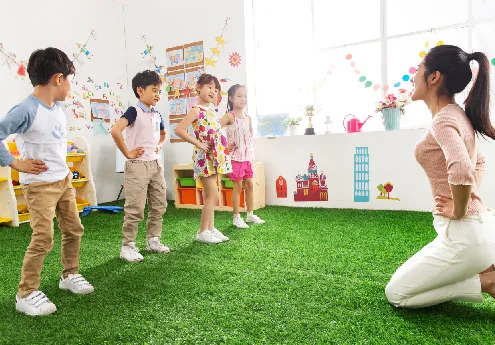
- Afrikaans
- Arabic
- Belarusian
- Bengali
- Czech
- Danish
- Dutch
- English
- Esperanto
- Estonian
- Finnish
- French
- German
- Greek
- Hindi
- Hungarian
- Icelandic
- Indonesian
- irish
- Italian
- Japanese
- kazakh
- Rwandese
- Korean
- Kyrgyz
- Lao
- Latin
- Latvian
- Malay
- Mongolian
- Myanmar
- Norwegian
- Persian
- Polish
- Portuguese
- Romanian
- Russian
- Serbian
- Spanish
- Swedish
- Tagalog
- Tajik
- Thai
- Turkish
- Turkmen
- Ukrainian
- Urdu
- Uighur
- Uzbek
- Vietnamese
fake grass
Oct . 07, 2024 14:45 Back to list
The Rise of Fake Grass A Green Alternative for Modern Living
In recent years, the use of fake grass, or artificial turf, has surged in popularity, becoming a staple for homeowners, businesses, and municipalities alike. This synthetic alternative to natural grass offers a range of benefits that cater to the demands of contemporary living while promoting sustainable practices.
One of the primary advantages of fake grass is its aesthetic appeal. Artificial turf replicates the lush, vibrant appearance of real grass, providing an evergreen landscape that requires no seasonal maintenance. Whether it’s for a residential backyard, a commercial space, or a public park, fake grass can enhance the visual attractiveness of any area, creating a lush oasis regardless of the climate. Homeowners can enjoy a beautiful lawn year-round without the laborious upkeep typically associated with natural grass, such as mowing, fertilizing, and watering.
The environmental benefits of fake grass are significant, especially in the context of growing water scarcity and the need for responsible resource management
. Traditional lawns require substantial amounts of water to maintain their health, a resource that is becoming increasingly precious in many regions worldwide. By switching to artificial turf, homeowners can dramatically reduce their water consumption—some estimates suggest that fake grass can save up to 55 gallons of water per square foot each year. This not only promotes conservation but also lowers water bills, making it an economically sound choice.Furthermore, fake grass mitigates the need for harmful chemicals, such as pesticides and fertilizers, which are often necessary for growing natural grass. These chemicals can leach into the soil and nearby water sources, causing ecological damage. In contrast, synthetic turf remains free from pests and diseases without the need for toxic treatments. This creates a healthier environment for families, pets, and wildlife. Parents can feel secure letting their children play on artificial grass, knowing that they are not exposed to potentially harmful substances.
fake grass

Another compelling aspect of fake grass is its durability and low maintenance. Unlike natural grass, which can suffer from wear and tear due to foot traffic, pets, and weather conditions, artificial turf is designed to withstand heavy use and retain its appearance over time. Rain or shine, it requires minimal upkeep; occasional brushing and rinsing are sufficient to keep it clean and looking great. This resilience makes it an attractive option for sports fields, playgrounds, and high-traffic areas, where natural grass simply cannot endure the same level of activity.
Some might argue that artificial turf lacks the genuine feel of real grass. However, advancements in technology have led to the development of increasingly sophisticated synthetic materials that closely mimic the texture and appearance of natural grass. These innovations have made it possible for fake grass to provide a softer and more realistic surface, enhancing the overall experience for users—whether enjoying a backyard barbecue, playing sports, or relaxing outdoors.
Despite the myriad of benefits, it is essential to consider the environmental impact of producing artificial turf. Most synthetic grasses are made from polyethylene, nylon, or polypropylene, which are petroleum-based products. While the long-term savings in water and chemicals are clear, the initial production and disposal of artificial turf must also be accounted for in discussions about sustainability. As the industry evolves, there is hope that more eco-friendly alternatives can be developed, such as biodegradable materials or recycling initiatives at the end of the turf’s life cycle.
In conclusion, the rise of fake grass represents a shift in how we approach landscaping and outdoor living. As cities become more crowded and water resources become scarcer, artificial turf stands out as a viable solution that combines functionality with aesthetics. Its ability to conserve water, reduce chemical use, and provide a durable, low-maintenance alternative makes it an appealing choice for many. While ongoing innovations and environmental considerations remain critical, the benefits of fake grass undoubtedly contribute to a greener future for urban environments and residential spaces alike.
-
The Benefits of Artificial Turf for Indoors
NewsJul.15,2025
-
How Artificial Grass Suppliers Ensure Quality Products
NewsJul.15,2025
-
Artificial Grass and Pets: A Space for Relaxation
NewsJul.08,2025
-
Balcony & Outdoor Decoration with Artificial Grass
NewsJul.08,2025
-
Best Indoor Artificial Grass for Home
NewsJul.07,2025
-
Best Pet Turf for Dogs: Safe & Durable Artificial Grass Options
NewsJul.07,2025
Products categories









